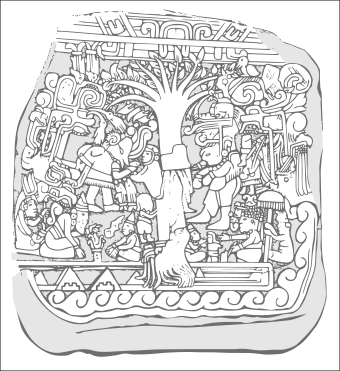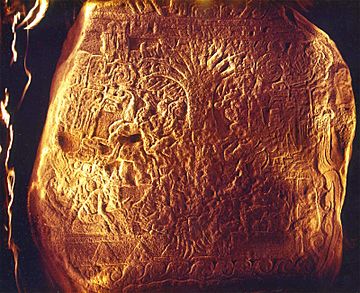Izapa Stela 5 facts for kids
Izapa Stela 5 is one of a number of large, carved stelae found in the ancient Mesoamerican site of Izapa, in the Soconusco region of Chiapas, Mexico along the present-day Guatemalan border. These stelae date from roughly 300 BCE to 50 or 100 BCE, although some argue for dates as late as 250 CE.
Also known as the "Tree of Life" stone, it appears to illustrate a Mesoamerican creation myth.
The stela
Documented by Smithsonian archaeologist Matthew W. Stirling in 1941, Stela 5 is composed of volcanic andesite and weighs around one-and-a-half tons. Stela 5 presents the most complex imagery of all the stelae at Izapa. Researcher Garth Norman, for example, has counted "at least 12" human figures, a dozen animals, over 25 botanical or inanimate objects, and 9 stylized deity masks.
Like much of Izapan monumental sculpture, the subject matter of Stela 5 is considered mythological and religious in nature and is executed with a stylized opulence. Given the multiple overlapping scenes, it appears to be a narrative.
See also
 In Spanish: Estela 5 de Izapa para niños
In Spanish: Estela 5 de Izapa para niños



